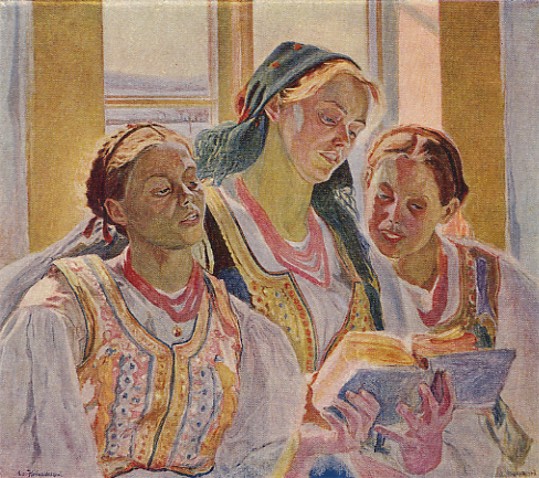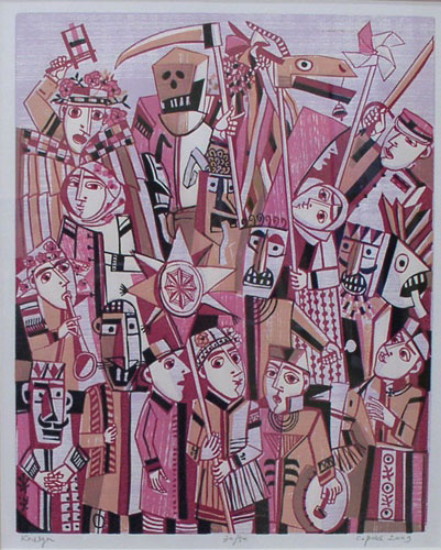Carols
Carols [Колядки; koliadky]. The custom of caroling is highly developed and widely practiced in Ukraine. There are two kinds of carols: koliadky and shchedrivky. The koliadky are festive, ritual songs sung at Christmas time, while the shchedrivky are sung on New Year's Eve. Both types of carols have retained traces of their ancient origin, particularly to the cult of the sun, of the ancestor worship, of nature worship, and of the faith in the magical power of words. The koliadky and shchedrivky depict scenes from farm life and express the desire for good harvests, prosperity, good fortune, and health. They are remarkable for their wealth of subject matter and motifs, which vary with the person who is addressed and praised in each carol. There are carols dedicated to the master of the house, the mistress of the house, the young bachelor, the girl, the daughter-in-law, the son-in-law, and so on. The carols dedicated to the master deal with farm work: they glorify prosperity, the happiness of a well-off farmer, and his well-being. The songs for the young bachelor depict his strength, courage, and good looks. The carols for girls praise their unmatched beauty, wisdom, deep love, diligence, and respect for parents. The descriptions of prosperity, beauty, and wisdom are magical incantations intended to secure the described effects. The most important aspect of carols is their wish-fulfilling power.
By their age and content the carols can be divided into several groups: (1) the oldest carols, which deal with the creation of the universe in a pre-Christian, dualistic, mythological framework; (2) a later stratum describing life in the Princely era; (3) carols about daily life; and (4) recent koliadky and shchedrivky, which have a biblical theme—Christ's birth, the shepherds, the three wise men, Herod. The Kyivan Mohyla Academy was famous for its new carols, which were composed in the 17th–18th century. Some carols were also composed by the monks of the Pochaiv Monastery in the 18th century. The process of Christianization embraced the whole content of the koliadky and shchedrivky. In some carols the ancient agricultural themes are fused with more recent religious themes, as in ‘V poli, poli pluzhok ore ...’ (In the Field the Plow Is Plowing).
As poetry koliadky and shchedrivky are remarkable for their artistic quality. They are distinguished by their joyful spirit, festive air, and melodious tunes. Their poetic and musical quality has attracted the attention of the best poets, writers, playwrights, and composers, such as Mykola Lysenko, Mykola Leontovych, Denys Sichynsky, Ostap Nyzhankivsky, and particularly Kyrylo Stetsenko, who arranged over 50 carols for choirs. The most popular and best-known carols are ‘Oi, vydyt' Boh’ (O, God Does See), ‘Boh predvichnyi’ (The Eternal God), ‘Nova radist' stala’ (A New Joy Has Come), ‘Dobryi vechir tobi, pane-hospodariu’ (Good Evening to You, Master), ‘V poli, poli pluzhok ore’ (In the Field the Plow Is Plowing), ‘Nebo i zemlia’ (Heaven and Earth), and ‘U Yerusalymi rano zadzvonyly’ (In Jerusalem the Bells Rang in the Morning). Leontovych adapted a simple melody of an ancient Ukrainian shchedrivka to create a miniature for choir entitled ‘Shchedryk’ (Carol of the Bells). This song has now become part of the American repertoire of carols.
BIBLIOGRAPHY
Sumtsov, N. Nauchnoe izuchenie koliadki i shchedrovki (Moscow 1885)
Potebnia, A. Obiasneniia malorusskikh i srodnykh narodnykh pesen. Part 2, Koliadki i shchedrovki (Warsaw 1887)
Domanitskii, V. Sovremennye koliadki i shchedrovki (Kyiv 1905)
Hnatiuk, V. Koliadky ta shchedrivky. Etnohrafichnyi zbirnyk, 35–6 (Lviv 1914)
Hrushevs’kyi, M. Istoriia ukraïns’koï literatury, 1 (Kyiv 1923; repr New York 1959)
Voropai, O. Zvychaï nashoho narodu, 1 (Munich 1958)
Koliadky ta shchedrivky (Kyiv 1965)
Kvitka, K. ‘Pesni ukranskikh zimnikh obriadovykh prazdnevstv,’ Izbrannye trudy v dvukh tomakh, 1 (Moscow 1971)
Kurochkin, O. Novorichni sviata ukraïntsiv (Kyiv 1976)
Petro Odarchenko
[This article originally appeared in the Encyclopedia of Ukraine, vol. 1 (1984).]
.jpg)
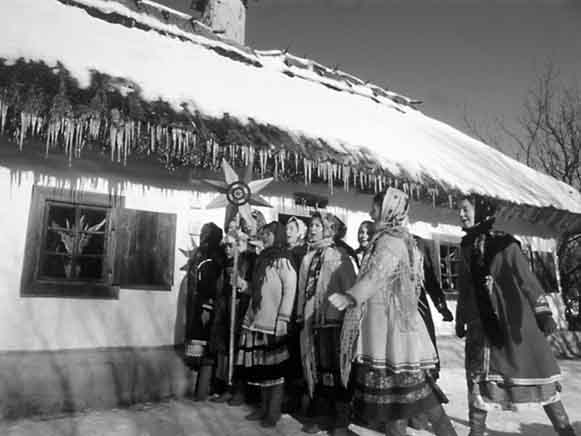
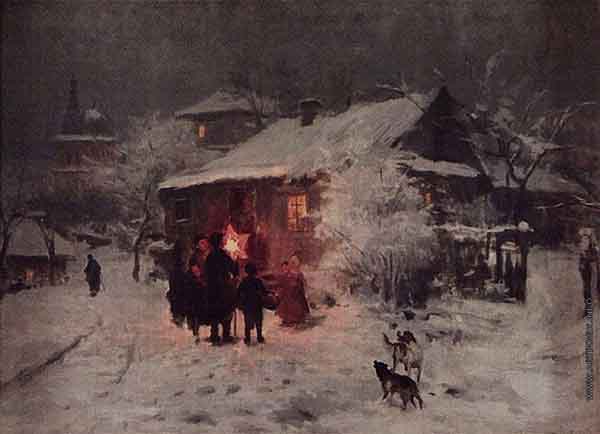
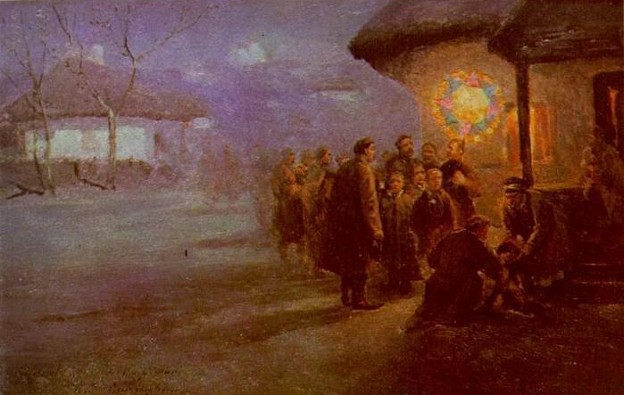
.jpg)
.jpg)
